25 CUSTOMER REVIEWS
106 CUSTOMER REVIEWS
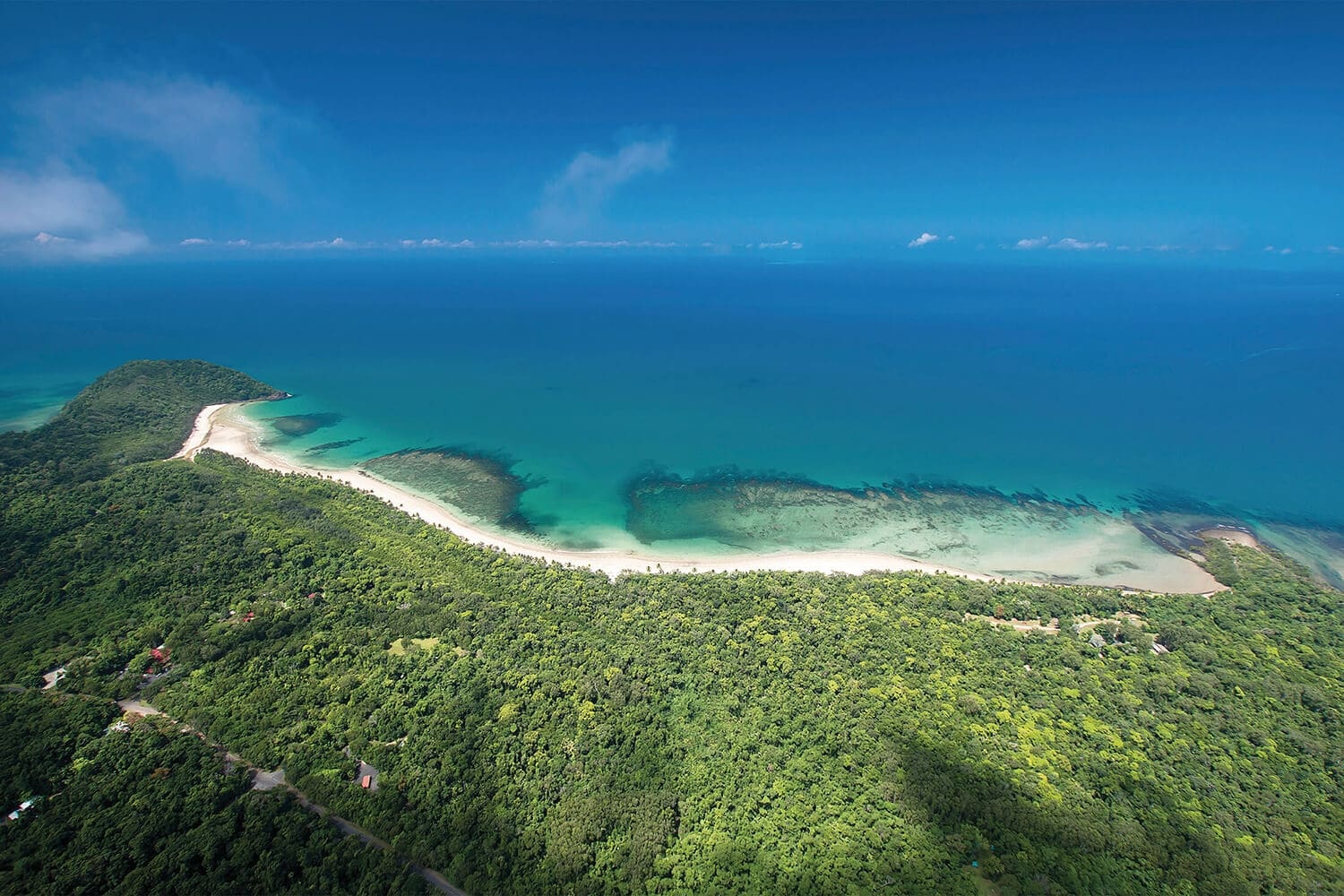
The Daintree National Park is the oldest, continuously surviving rainforest on earth which comprises of two sections - Mossman Gorge and Cape Tribulation, covering an expanse of more than 1,200 sq km. This special area is the only place on earth where two heritage listed areas meet side by side - the reef and the rainforest. The landscape is extraordinary and diverse, featuring magnificent scenery, mountain ranges, crystal clear streams and waterfalls, deep gorges and dense rainforest.
The outstanding coastal scenery provides an extremely rare combination of tropical rainforest, white sandy beaches and fringing reefs.
This tropical rainforest ecosystem is one of the most complex on earth, just one hectare of the 120,000 hectare forest can contain over 30,000 species of plants and animals many of them the rarest and most primitive of flowering plants on earth.
In 1988, Daintree National Park was recognised internationally as a significant, natural area with its inclusion in the Wet Tropics World Heritage Area listing. This has ensured that the region remains mostly untouched and in pristine condition, guaranteeing visitors an exciting and unique experience.
The Daintree National Park is easily accessible with guided tours departing daily, and with sealed roads allows you the opportunity to self drive and explore the region at your own pace.
Accommodation is readily available in the rainforest, you will find a number of boutique rainforest cabins and holiday homes that blend into the natural surrounds. cafés and eateries allow you to sample a taste of the tropics, and with a variety of activities and attractions available, you can certainly experience all that this natural wonder has to offer.
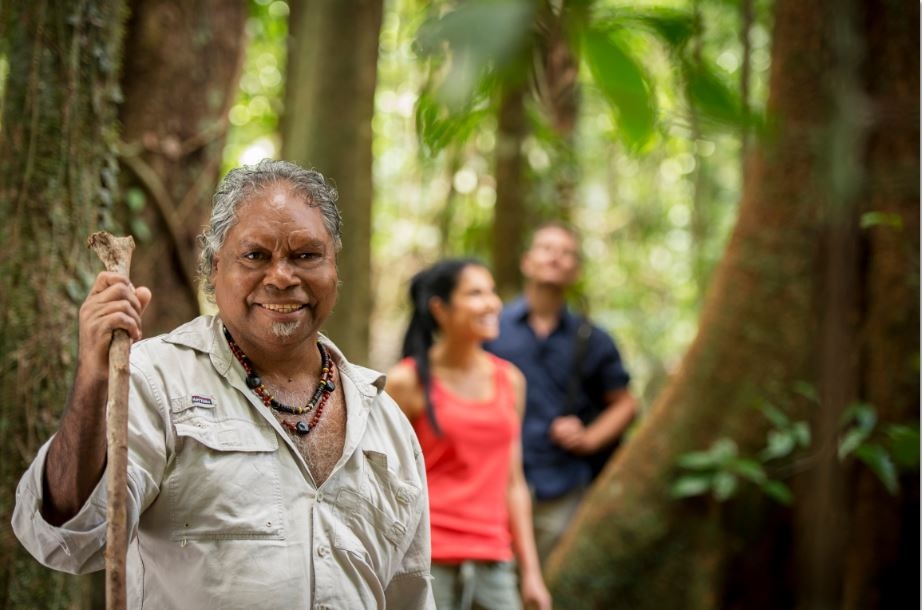
Mossman Gorge is located just 20 minutes by car north of Port Douglas and is the gateway to the World Heritage Listed Daintree National Park. Renowned for its crystal-clear waters that cascade over granite boulders, Mossman Gorge in particular, is a must on the holiday itinerary for most visitors. Mossman Township itself has been a rural centre for the sugar cane industry for many years. As the last main town before the Daintree River, it provides a service centre for people heading North.
Indigenous Culture
The Eastern Kuku Yalanji Aboriginal people are the Traditional Owners of this area, with their tribe dating back some 50,000 years ago to the earliest human occupation of Australia.
They are the only aboriginal tribe in Australia who still have their own language, and describe themselves as true rainforest people who live in absolute harmony with their environment.In pre-contact times, the Kuku-Yalanji subsisted by preparing rainforest fruit and plants (nutritional and medicinal) capturing scrub turkey, fish, honey, possum, eggs, tree kangaroo, fresh water shrimp, eel and seafood such as mud-whelks, turtle eggs, 'pipi' and fish etc. Today, the Kuku Yalanji people retain strong traditional connections to this World Heritage listed Area, they play a very important part in the protection and maintenance of the Daintree.
Mossman Gorge Centre
The Mossman Gorge Gateway Centre is a new Indigenous eco tourism development that features a contemporary café, art gallery, gift shop and tour desk. Staffed by local residents, it offers the opportunity to learn about the rich cultural heritage that links the people of the region to the land.
An eco shuttle bus service departs every 10 minutes from here, transporting visitors into the heart of Mossman Gorge for a small fee. This service was developed to reduce the high amount of tourist traffic entering the gorge, and to ensure the protection of this significant landmark.
Dreamtime Walks
The Ngadiku Dreamtime Walks are a wonderful opportunity for visitors to connect with the local Rainforest Aboriginal people. Conducted by a local Indigenous tour guide, the walk will take you on a journey along private, gentle tracks, visiting special places and culturally significant sites. Hear first-hand from the Kuku Yalanji people the creation stories and history that are steeped in the roots of this ancient rainforest.
Learn about eating bush tucker, using plants and animals for curing sickness and disease, traditional and contemporary ways of looking after the rainforest and the importance of this for enriching the livelihoods of the Eastern Kuku Yalanji people. Choose from a 1.5 hour or 2.5 hour fully guided walk, or enjoy as part of a full Daintree Rainforest experience.
Walking Trails & Facilities
Mossman Gorge features extensive walking tracks, a day use area and the opportunity to take a cool swim in the refreshing waters. The range of habitats in the Mossman Gorge section of Daintree National Park supports a diverse assortment of wildlife.
Butterflies are among the most commonly seen animals. Look for the brilliant, metallic-blue Ulysses butterfly and the striking black and green male Cairns birdwing butterflies along the walking tracks and near the river.
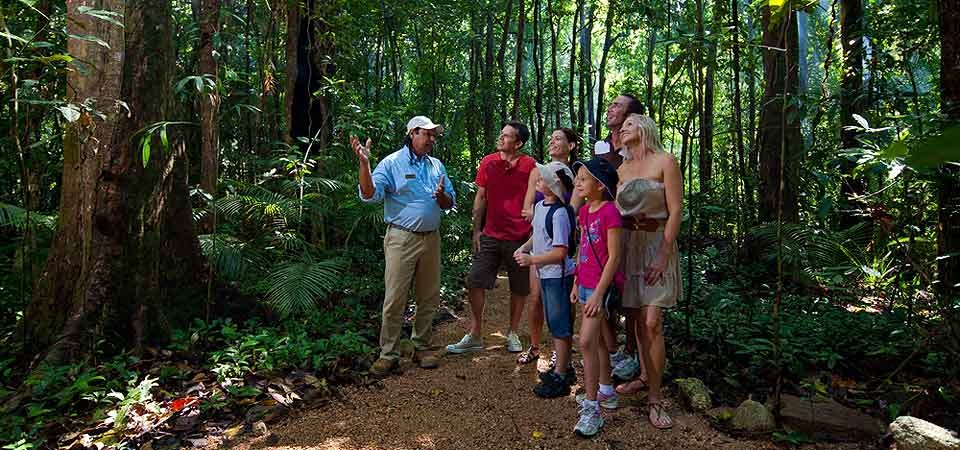
Baral Marrjanga—270 m (5–10 mins) Grade: easy
Baral Marrjanga leads through the rainforest from the car park to a lookout with views of the Mossman River and the mountain ranges beyond. The track includes two sections of elevated boardwalk which pass through the lower rainforest canopy. The track is suitable for wheelchairs, strollers and the vision-impaired.
Lower river track—300 m (5–10 mins) Grade: moderate to easy
This track starts at the car park and winds along the Mossman River before joining Baral Marrjanga. Several small lookouts along the track provide views of the river. Although most of the lower river track is easy walking, the steps can be slippery. Please take care and use the handrails provided.
Rex Creek bridge—460 m (10 mins) Grade: moderate to easy
To reach the Rex Creek suspension bridge, follow Baral Marrjanga to the lookout and take the short, sign-posted track to the left.
Rainforest circuit track (from Rex Creek bridge)—2.4 km return (45 mins) Grade: moderate to easy
This track begins on the far side of Rex Creek bridge. On the left, 80 m from the bridge a small lookout provides views of Manjal Dimbi (Mount Demi). A little way past the lookout the track divides to form a circuit that meanders through the rainforest.
Seasonal track closures may occur from time-to-time due to localised flooding or track maintenance.
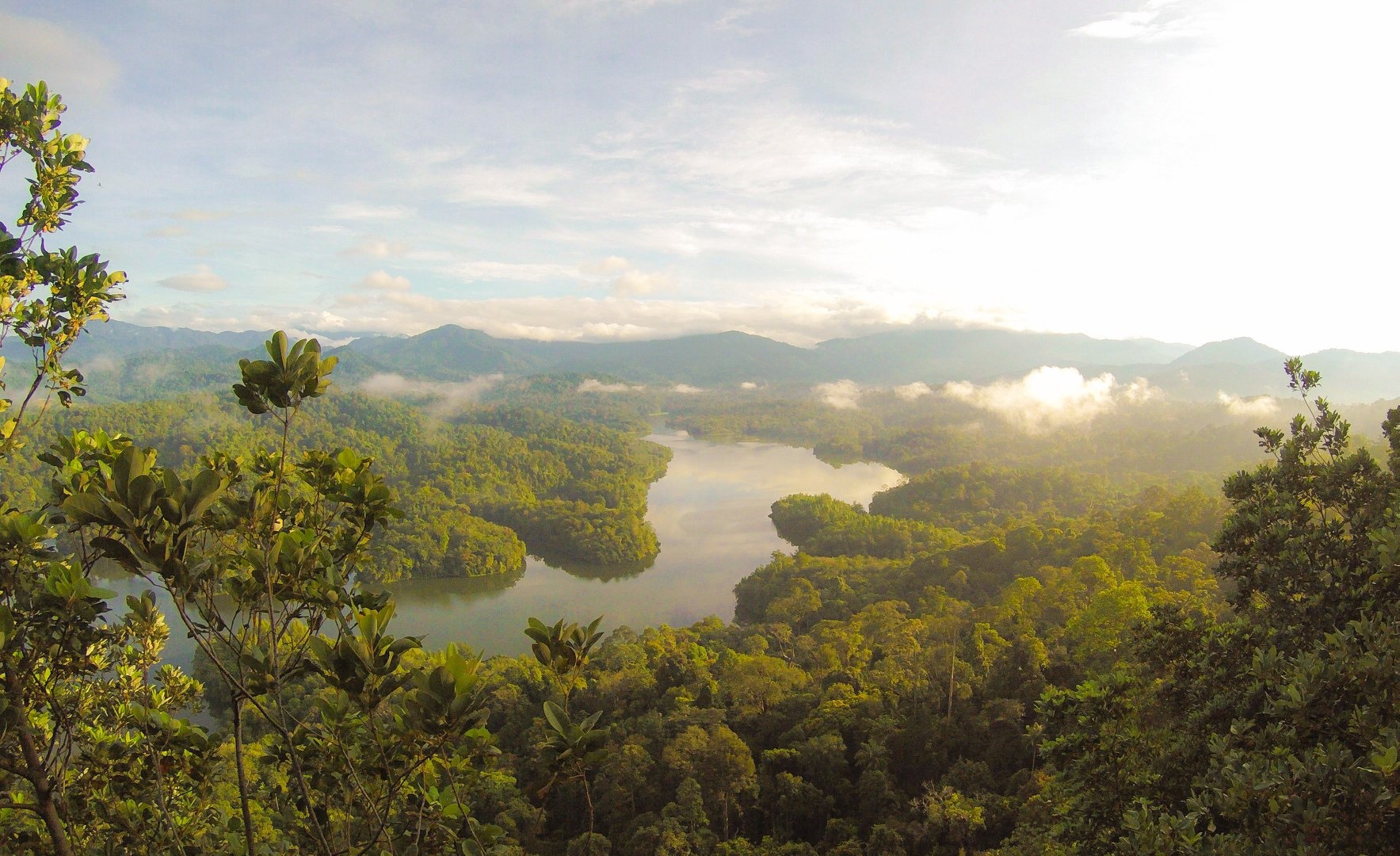
The Daintree River is home to many estuarine crocodiles and an abundance of birdlife endemic to the Daintree Region. Croc spotting and birdwatching tours depart daily from various locations along the banks of the Daintree River. A river cruise provides superb wildlife viewing opportunities, with an average of 40 birds and animals sighted on each tour including crocodiles, snakes, and rare birds. Cruises are provided in a small vessel which enables an intimate exploration of the river banks and wildlife in the trees and sky above.
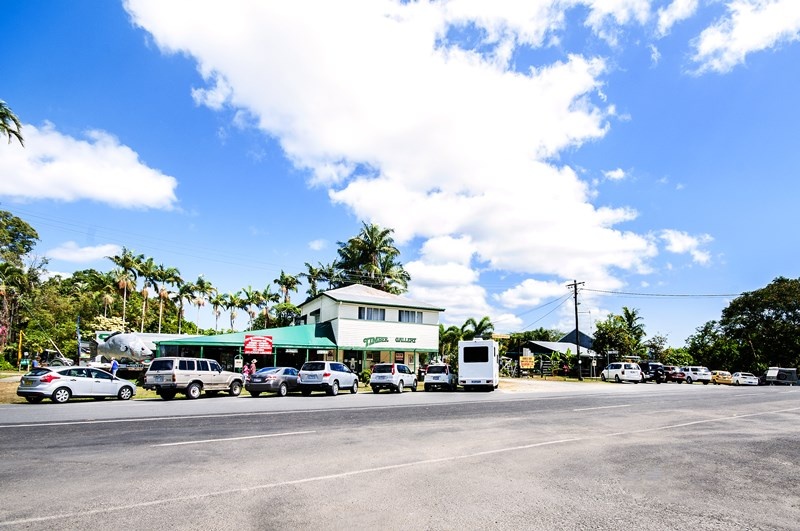
From Mossman it is approx a 20 minute scenic drive north towards the Daintree Ferry turn off. If you carry on straight you will arrive at the small artful township of Daintree Village. This township is home to only about 100 people and it is very laid-back with a country feel. Set in the midst of some of the loveliest and most varied scenery in Far North Queensland, Daintree Village hosts a number of restaurants, artists' studios, locally-created souvenirs and picnic areas. The Daintree River flows past the Village, and the surrounding hills and valleys provide pristine agriculture pastures for cows to graze.
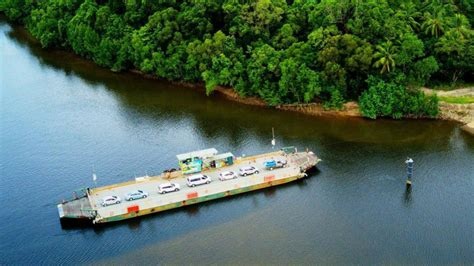
The north and south banks of the Daintree River are linked by the Daintree Ferry. The Daintree ferry is the only cable ferry operating within tropical Australia. It makes continuous crossings of the Daintree River throughout the day, which takes about 5 minutes to cross the river. A fee is payable to use the ferry service prior to boarding. The ferry operates 6.00am until midnight every day with a reduced service on Christmas Day.
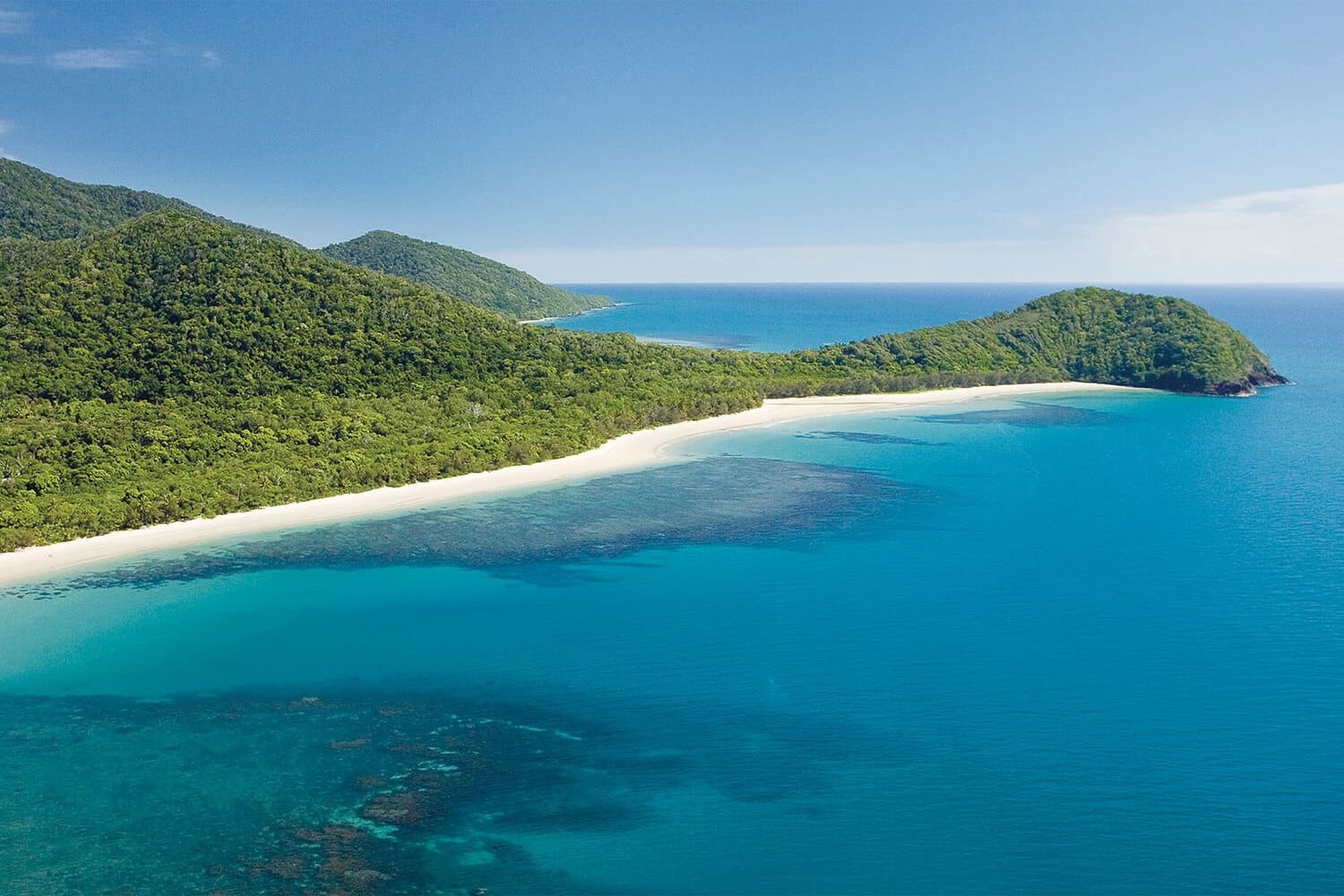
The Cape Tribulation section of Daintree National Park stretches from Cow Bay to the Bloomfield River, and covers 17,000 ha including the coastal range (Thornton's Peak, Mt Hemmant, and Mt Sorrow, going north from the Daintree river). Cape Tribulation itself is a headland that juts out into the Coral Sea; named by Lieutenant James Cook after his ship, Endeavour, was holed on a reef in the area in 1770, it was here he penned that his trials and tribulations began.
The coastline comprises of deserted beaches framed by lowland rainforest, mangroves, eucalypt forest and wetlands. Crystal clear creeks and waterfalls flow out into the ocean. Thornton beach to Cape Tribulation beach is fringed with the increasingly rare littoral (beachside) rainforest and interesting fringing reefs, which is renowned as the place where where two spectacular World Heritage sites meet - the Daintree Rainforest and the Great Barrier Reef.
Cape Tribulation is a hive of activity from bush walking, kayaking and horse riding treks to snorkelling, exotic fruit tastings and 4WD safaris. Accommodation is readily available, and it is highly recommend to spend at least one night in the rainforest to experience the closeness of nature and the wonders of this ancient land.
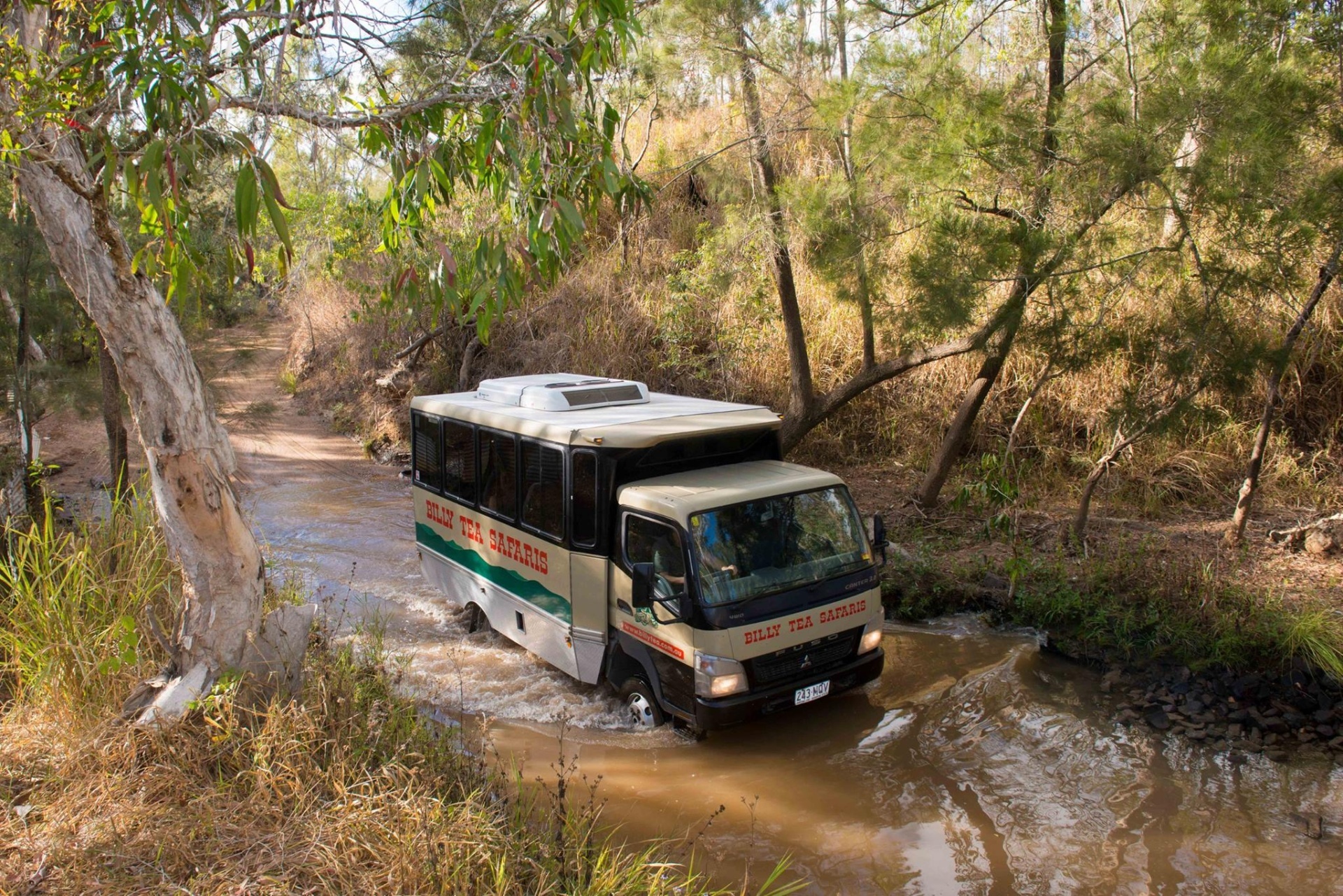
Beyond Cape Tribulation begins the start to the Bloomfield Track. This four-wheel-drive track is one of Australia's most scenic and challenging drives. Travelling through the heart of the Wet Tropics, the drive features waterfalls, creek crossings, rainforest-clad ranges and stunning views. The road is only partially sealed with very steep ranges and natural creek crossings, and as such, can become impassable after heavy rain.
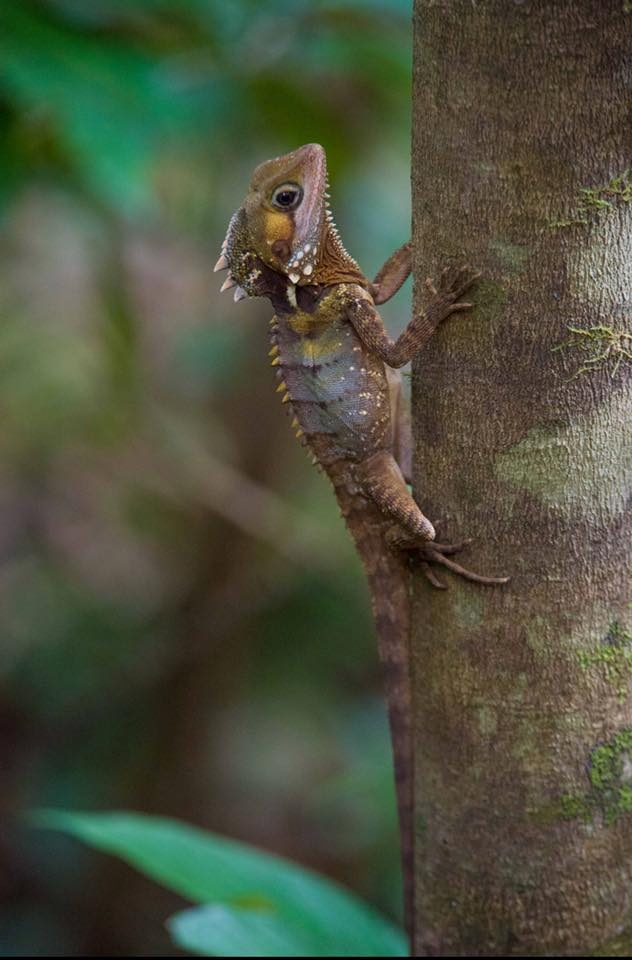
Daintree National Park is home to a large number of endemic animals and primitive plant families, found nowhere else in the world. 13 of the world’s 19 primitive flowering plant species have been identified here, meanwhile 28% of frogs, 65% of ferns, 40% of birds and 34% of mammals in Australia live amongst the Daintree Rainforest.
One of the iconic species of the Daintree is the endangered Cassowary. And if you are very lucky you might spot one of these giant flightless birds while visiting the area. Of the five ringtail possum species found in North Queensland rainforests, the Daintree River ringtail possum is almost wholly restricted to the Daintree catchment.
The musky rat-kangaroo is often active during the day and may be glimpsed foraging on the forest floor, and the Bennett's tree-kangaroo is found only in the lowland and upland rainforests north of the Daintree River. Lace monitors (goannas) are often seen patrolling the picnic areas for food scraps.